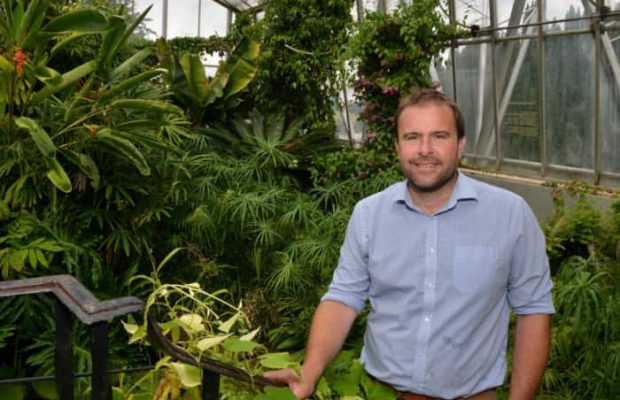- Home
- News
- What’s On
- Activities for Children
- Arts & Crafts
- Autos and Bikes
- Business events
- Car Boot & Auctions
- Charity events
- Churches & Religious
- Comedy
- Dance
- Days out & Local interest
- Education
- Exhibition
- Film
- Gardening & Horticulture
- Health
- Markets & Fairs
- Music
- Nature & Environment
- Spiritual
- Sport
- Talks and Discussions
- Theatre and Drama
- Business
- Local Information
- Jobs
- Deaths
- Charity events
- Contact Us
Top banana from Chatsworth under threat

Next time you tuck into a banana you might want to consider that the banana originated in the glasshouses of Chatsworth House – and the humble fruit could soon disappear altogether.
Go into any UK shop and you will almost certainly be buying a Cavendish banana, descended from a single plant grown 170 years ago, at the stately home by the 18th century landmark’s famous gardener Joseph Paxton.
Paxton, who named the fruit after 6th Duke of Devonshire William Spencer Cavendish, his ‘top banana’ is now the world’s main commercial fruit crop.
Now, however, scientists are fearful for its future as a ferocious fungus, Panama disease, threatens to wipe out the species for good, destroying crops in Africa, Asia, Australia and the Middle East.
While the search begins for a strain of the Cavendish that is resistant to the fungus, Chatsworth continues to grow the fruit in isolation, protecting it against the disease.
Steve Porter, head gardener at Chatsworth, said: “We are hopeful that the work being done by scientists around the world to find a cure for the disease threatening the Cavendish banana will be successful.
“We’re proud of the banana’s heritage at Chatsworth and still grow them in our greenhouses, so any development that can safeguard the future of the Cavendish banana for future generations is very welcome.”
Steve now oversees a team of around 20 gardeners tending to the grounds at Chatsworth, but in the early 19th century Joseph Paxton would have been dealing with a staff of hundreds.
According to legend, Paxton was inspired to grow a banana by one he saw depicted on Chinese wallpaper in a bedroom at the home.
For nearly a hundred years the story was thought to be a myth, as nobody could find the painted banana- then, in the 1920s, Duchess Evelyn moved a large four-poster bed and there it was.
Paxton had bought a banana plant for £10 and was determined to get it to bear fruit. He arranged for a pit to be dug in one of the Chatsworth hothouses and filled it with ‘plenty of water, rich loam soil and well-rotted dung dung.’ The temperature in the hothouse was maintained between 65F and 85F.
In 1835, the banana plant flowered and by the following May it was loaded with more than 100 fruit.
Steve added: “It was an exciting time at Chatsworth. Bananas had not been grown in the UK up until this point- suddenly, the Duke is enjoying them off his table, handing them out at parties. It was a bit of a showing off thing.”
In those days, the market for bananas was largely limited to the tropics but, in the 1880s, the worldwide trade really began to take off.
Fast sailing schooners, dubbed banana boats, raced across the oceans to deliver their valuable cargo before it over-ripened.
The arrival of steamships gave a further boost to the trade, while the invention of refrigerated holds ensured the fruit could survive the trip.
Fast forward to the present day, and in Britain we now eat more than 140 million bananas each week – seven billion bananas a year.
Various concoctions of the Cavendish banana are claimed to be good for curing hangovers, jet lag, morning sickness, mosquito bites and warts.
And the banana has other claims to fame- it inspired the song ‘Yes, We Have No Bananas’, written by Leon Trotsky’s nephew.
Unfortunately, the 1923 hit could soon ring true.
“Commercially, Panama disease could see us lose the majority of our banana production worldwide, in theory,” said Steve.
“But at Chatsworth, the Cavendish banana holds sentimental value. It has been grown here for centuries and is something we have clung onto for generations.”
Bananas are still available in the shops but, should Panama disease spread from Asia where it is currently confined to America, it could wipe out the world’s entire crop.
Image: Chatsworth head gardener Steve Porter

You must be logged in to post a comment Login